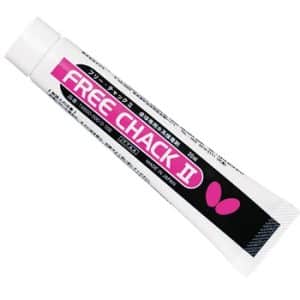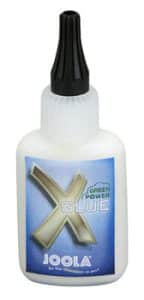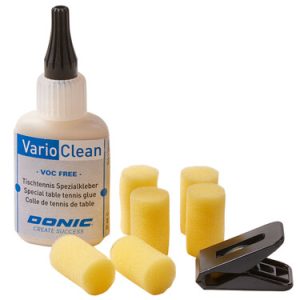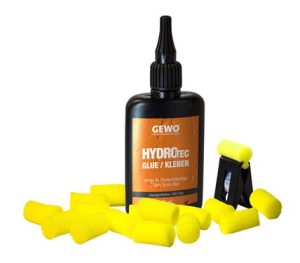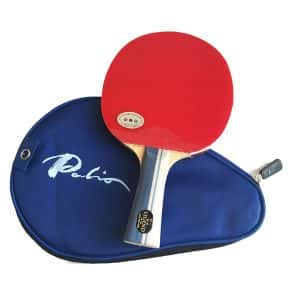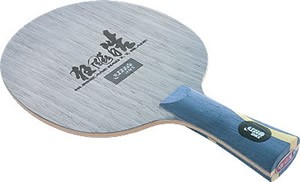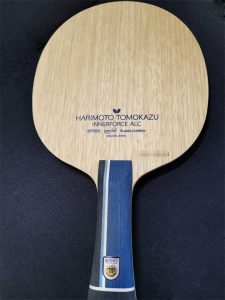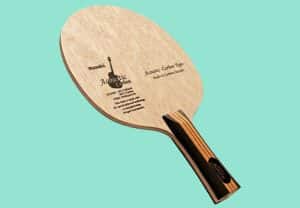Table tennis, a sport that demands precision and agility, is greatly influenced by the quality and maintenance of your equipment. A well-maintained racket can significantly enhance your performance and overall gameplay experience. This is why, this guide on how to remove glue from table tennis racket and apply new rubbers is necessary for every player.
Table of Contents
Understanding the Importance of Racket Maintenance
Just like any other sports equipment, table tennis rackets require regular care and maintenance to ensure optimal performance. Over time, factors such as sweat, dust, and grime can accumulate on the racket’s surface, affecting its grip, spin, and overall feel. Improper gluing techniques or using outdated glue can also lead to performance issues and damage to the racket.
Understanding ITTF Glue Regulations
In the fast-paced world of table tennis, where precision and control are paramount, the adhesive used to affix
History and Ban of Speed Glue:
Speed glue, once a ubiquitous choice among players seeking enhanced performance, faced a significant turning point in 2007. Responding to an unconfirmed health incident in Japan, the ITTF swiftly banned all speed glue containing “volatile compounds.” This ban, effective immediately, marked the end of an era dominated by the distinctive high-pitched sound and weight increase associated with speed glue.
Impact on Gameplay:
While speed glue offered increased speed, it came with drawbacks. The heightened sponge thickness led to a trade-off between speed and control. Furthermore, the accumulation of glue on the racket over multiple applications increased weight, affecting player sensitivity. The tension on the sponge from glue also accelerated
Transition to Water-Based Glues:
In response to the ban, table tennis manufacturers embarked on a journey of innovation. Water-based glues, such as Butterfly Free Chack and Donic Vario Clean, emerged as the go-to alternatives. These glues, free from volatile organic solvents, addressed health concerns and provided a reliable method for affixing
ITTF Regulations and Player Guidelines:
The ITTF’s regulations on racket coverings emphasize the use of authorized materials without modifications. Complete re-gluing during tournaments is prohibited unless new
Testing and Compliance:
To ensure compliance, racket testing, likely involving the Enez testing device, may be conducted at championships. New
As we delve into the process of removing glue from table tennis rackets and applying new rubbers, it’s essential to appreciate the context set by these ITTF regulations. Embracing water-based glues not only aligns with the rules but also contributes to a sustainable and healthy environment for the sport we love.
How to Remove Glue From Table Tennis Racket?
Before embarking on any maintenance task, it’s crucial to remove any old glue residue from the blade and rubbers. Old glue can hinder the adhesion of new glue, making it difficult to achieve a secure and consistent bond. Additionally, old glue can cause the
Techniques to Remove Glue From Table Tennis Racket
There are two primary methods for removing old glue from table tennis rackets:
Using Acetone: Acetone is a solvent that effectively dissolves old glue without damaging the blade or rubbers. Apply a small amount of acetone to a sponge or cloth and gently rub the affected area until the glue is removed. Allow the racket to air dry completely before proceeding.
Soapy Water: Soapy water is a gentler alternative to acetone, particularly for sensitive rubbers. Mix a small amount of dishwashing liquid with warm water and apply it to the glue residue using a sponge or cloth. Work in circular motions until the glue is removed. Rinse the racket with clean water and allow it to air dry completely.
Gluing Techniques: Achieving a Secure Bond
Proper gluing technique is essential for ensuring a secure and durable bond between the blade and rubbers. Follow these steps for optimal results:
Preparation: Clean the blade and rubbers thoroughly to remove any dust or residue. Apply a thin layer of glue evenly to both surfaces, ensuring complete coverage.
Alignment: Carefully align the rubbers to the blade, ensuring they are straight and parallel to the handle. Avoid any air bubbles by pressing gently from the bottom to the top of the rubbers.
Drying: Allow the glue to dry completely, following the manufacturer’s instructions. This may take several hours, so plan accordingly.
Read out article on how to spread table tennis glue on the blade.
Choosing the Right Glue for Your Racket
The type of glue you choose significantly impacts the performance and longevity of your racket. Water-based glues are the preferred choice for table tennis rackets due to their safety, ease of use, and compatibility with various rubbers. Avoid using solvent-based glues, as they can damage the racket and are prohibited by the International Table Tennis Federation (ITTF).
Top 4 ITTF Approved Glues for Table Tennis
A well-maintained table tennis racket is crucial for achieving optimal performance and enjoying the game to the fullest. Proper gluing is an essential aspect of racket maintenance, as it ensures a secure bond between the blade and rubbers. Selecting the right glue is critical to maximizing your racket’s potential and adapting it to your playing style.
1. Butterfly Free Chack II Glue:
Product Overview: Butterfly Free Chack II Glue is a renowned water-based glue known for its exceptional adhesion, cleanliness, and durability. It is a popular choice among professional and amateur players alike due to its consistent performance and ease of use.
Features:
- Strong adhesion for a secure bond between blade and rubbers
- Clean application and removal, leaving no residue
- Durable bond that withstands intense play
Ideal For:
- Players who prioritize adhesion and durability
- Those seeking a clean and easy-to-use glue
- Users who frequently replace their rubbers
2. Joola X Glue Green Power:
Product Overview: Joola X Glue Green Power is a solvent-free adhesive that provides exceptional adhesion, short drying time, and effortless
Features:
- Rapid bonding for quick assembly and game time
- Effortless
rubber removal for convenient maintenance - Residue-free application for a clean and professional finish
Ideal For:
- Players who value quick bonding and easy
rubber replacement - Users who prefer a solvent-free alternative
- Those who seek a versatile glue for various playing styles
3. Donic Vario Clean Glue:
Product Overview: Donic Vario Clean Glue is a budget-friendly option that delivers excellent performance and durability. It is a water-based glue that offers strong adhesion and effortless
Features:
- Durable bond for long-lasting performance
- Easy-to-remove formula for convenient
rubber replacement - Affordable price for budget-minded players
Ideal For:
- Players seeking a balance of performance and affordability
- Users who frequently change their rubbers
- Those who prefer a water-based and residue-free glue
4. GEWO HydroTec VOC-Free Glue:
Product Overview: GEWO HydroTec VOC-Free Glue is a cutting-edge adhesive designed for modern offensive rubbers with large-pored sponges. It offers a solvent-free and VOC-free formula, making it an environmentally friendly choice.
Features:
- Optimized for modern offensive rubbers, enhancing spin and control
- Solvent-free and VOC-free composition for eco-conscious players
- Quick drying time for rapid assembly and game time
- Effortless
rubber removal for easy maintenance
Ideal For:
- Players who use modern offensive rubbers with large-pored sponges
- Users who value an environmentally friendly and solvent-free glue
- Those who prioritize spin and control in their game
Cutting Rubbers: Achieving a Perfect Fit
A properly cut
Essential Tools
Before you begin, gather the following tools:
- Sharp scissors or a retractable knife
- Cutting mat or a protective surface
- Marker or pen
Cutting Procedures
-
-
Marking the Cutline:
- Place the
rubber on the blade and trace around the edges with a marker or pen. - Ensure the lines are straight and parallel to the blade’s edges.
- Leave a small overhang (approximately 2-3mm) beyond the marked lines.
- Place the
-
Marking the Cutline:
-
Cutting the
Rubber :
-
-
-
Choose the appropriate cutting tool:
- Scissors: Recommended for beginners and fragile rubbers.
- Retractable knife: Offers more precision and control for experienced users.
- Place the
rubber on a cutting mat or a protective surface. - Carefully cut along the marked lines, applying gentle pressure.
- Cut just outside the lines to allow for minor adjustments.
-
Choose the appropriate cutting tool:
-
-
Trimming the Edges:
-
-
- Once the
rubber is cut, inspect the edges for any unevenness or rough patches. - Use the scissors or retractable knife to trim the edges evenly.
- Aim for a smooth and polished finish.
- Once the
-
-
Handling Overhang (Optional):
-
- Some players prefer to leave a small overhang of
rubber around the blade’s edges. - This overhang can provide a slight cushion and improve ball control.
- If you choose to trim the overhang, use scissors or a retractable knife to cut it flush with the blade’s edges.
- Some players prefer to leave a small overhang of
Tips for Success
- Use sharp scissors or a retractable knife for a clean and precise cut.
- Cut slowly and carefully to avoid mistakes.
- Follow the marked lines accurately to ensure a proper fit.
- Trim the edges evenly for a professional appearance.
- Consider personal preference regarding overhang size.
Cleaning Table Tennis Rubber
Regularly cleaning table tennis rubber is essential for preserving the grip, spin, and overall performance of your table tennis rubbers. Use a damp sponge or cloth to gently wipe down the rubbers after each use. Avoid using harsh chemicals or abrasive materials, as these can damage the
Additional Maintenance Tips
- Store your racket in a protective case when not in use to protect it from dust, moisture, and damage.
- Avoid exposing your racket to extreme temperatures, as this can affect the glue and
rubber . - If your racket gets wet, dry it immediately with a soft cloth.
- Inspect your racket regularly for any signs of wear or damage.
Conclusion: A Well-Maintained Racket for a Thriving Game
Maintaining your table tennis racket is an investment in your performance and overall gaming experience. By following the proper techniques for gluing, cutting, and cleaning your rubbers, you can ensure that your racket remains in top condition, delivering optimal spin, control, and power. Remember to choose high-quality glues and rubbers that complement your playing style, and always store your racket properly to protect it from damage. With proper care and maintenance, your racket will be your trusted companion in the pursuit of table tennis excellence.
Abdullah Shahid

